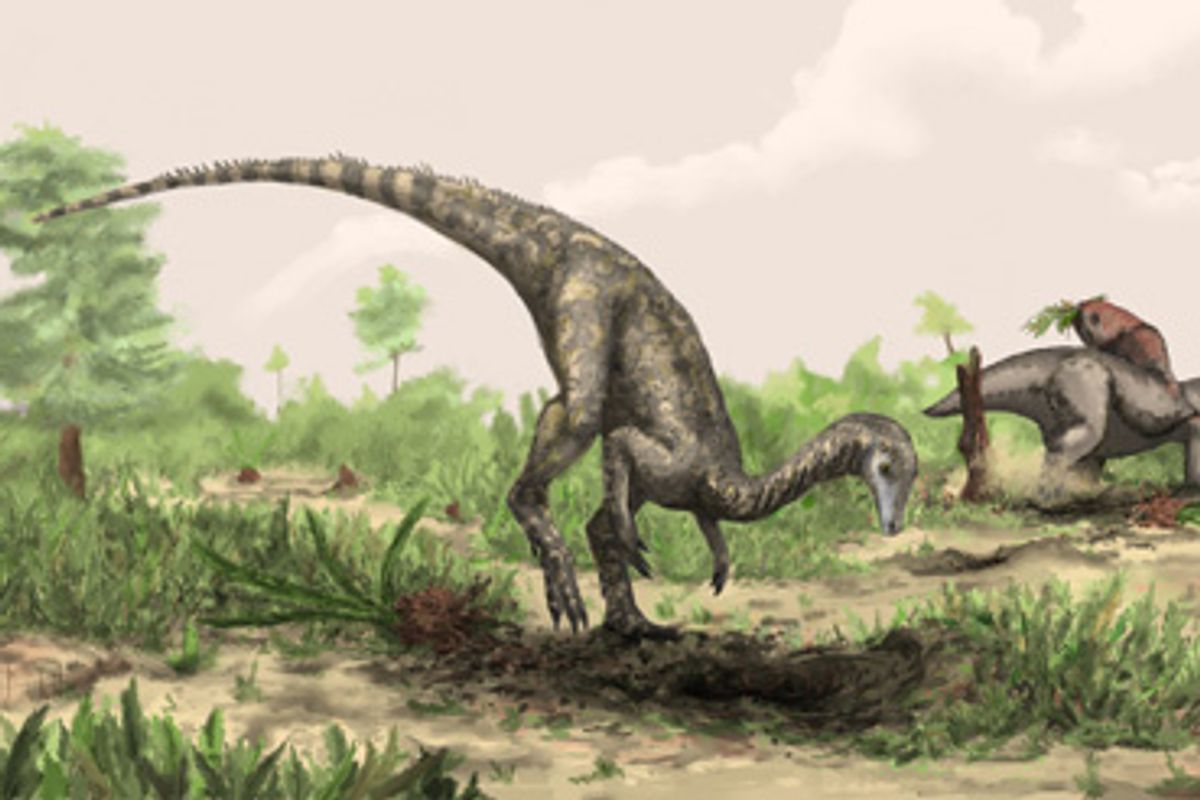Key Takeaways on the Oldest Dinosaur
- The oldest dinosaur was Nyasasaurus, which lived about 243 million years ago.
- Nyasasaurus lived during the middle Triassic when the supercontinent Pangea was still intact.
- Early dinosaurs were about the size of a chicken and often ate meat. As they evolved, some would grow to be the size of buildings and eat plants.
The oldest dinosaur known to date was discovered over a decade ago in Tanzania. Called Nyasasaurus, the species would have lived around 243 million years ago during the middle Triassic. It would have stood upright at around 3 feet and weighed between 45 and 135 pounds.
But the evolution into the dinosaur era wasn’t sudden; it happened over millions of years until finally becoming the Age of Dinosaurs, when species of dinosaurs, large and small, would rule the Earth.
Read More: First Ancient Crocodile Relative from 237 Million Years Ago Was Unearthed in Brazil
The Oldest Dinosaur and Life 230 Million Years Ago
At the time that dinosaurs were seeing their dawn, all of the continents were merged together into the supercontinent Pangea. In all, three sites in the Northern Hemisphere provide context for these ancient ecosystems in present-day Wyoming, Morocco, and Nova Scotia.
At the time, Morocco would have been smashed up against the edge of the eastern seaboard, and once it separated, so too did the dinosaurs, says David Lovelace, a vertebrate paleontologist at the University of Wisconsin Geology Museum in Madison, Wisconsin.
Lovelace says that it was a humid period, but soon after, during the Carnian Pluvial Episode (CPE), volcanic activity off the coast of North America led to climate change and intense rainfall that lasted for over a million years. Prior to the CPE, much of the land was made up of deserts, which made travel across the continents more difficult.
“The land at the beginning of the Triassic was relatively flat with slight bumps where the Rocky Mountains are now,” says Lovelace. These would have looked more like highlands at the time where the land was populated with pine trees, ferns, and cycads. Pollen and spores, along with some leaf fossils, show us which plants thrived at the time.
How Dinosaurs Evolved Into What They Are Today
These early dinosaurs would have lived alongside giant amphibians called Temnospondylis that could grow up to 10 feet long, swimming in freshwater and coastal environments. And then there were archosaurs, which, along with birds and crocodiles, are the group from which the early dinosaurs evolved into over 700 species of non-avian dinosaurs.
Most of the earliest dinosaur fossils from around 230 million years ago have been found in the Southern Hemisphere, but specimens found recently in Wyoming show that at least one dinosaur called Ahvaytum bahndooiveche also came from around this same period in the Northern Hemisphere.
“It was about the size of a chicken with a long tail and long neck,” says Lovelace. It looked like a little meat-eating dinosaur, and it was. Even though one day it would become the long-necked sauropods that would walk on all fours, nosh on endless vegetation, and grow as big as a skyscraper, it started off small and meat-eating.
Early dinosaurs were carnivorous or at least omnivorous, getting by on what they could find. But pretty soon after, sauropods and theropods would split on the family tree and become the herbivores and carnivores that we know today.
Why More Dinosaurs Are Found in the Southern Hemisphere
The reason most dinosaurs have been found in the Southern Hemisphere is that the rocks available for excavation at the surface are very old.
“The majority of the late Triassic rocks in North America are limited to slightly younger sections,” says Lovelace.
This means that scientists have trouble finding rocks that are from the time period that would have preserved these early fossils in North America. The same is true of European rocks, but for a different reason: in Europe, these older rocks tend to be underwater. Still, it’s likely that as we find more specimens, they may be even older and from varying parts of the globe.
Read More: Oldest Dinosaur Bone Infection Discovered in 220-Million-Year-Old Plateosaurus
Article Sources
Our writers at Discovermagazine.com use peer-reviewed studies and high-quality sources for our articles, and our editors review for scientific accuracy and editorial standards. Review the sources used below for this article:

